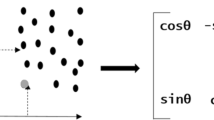Abstract
Big data technologies and a range of Government open data initiatives provide the basis for discovering new insights into cities; how they are planned, how they managed and the day-to-day challenges they face in health, transport and changing population profiles. The Australian Urban Research Infrastructure Network (AURIN – www.aurin.org.au) project is one example of such a big data initiative that is currently running across Australia. AURIN provides a single gateway providing online (live) programmatic access to over 2000 data sets from over 70 major and typically definitive data-driven organizations across federal and State government, across industry and across academia. However whilst open (public) data is useful to bring data-driven intelligence to cities, more often than not, it is the data that is not-publicly accessible that is essential to understand city challenges and needs. Such sensitive (unit-level) data has unique requirements on access and usage to meet the privacy and confidentiality demands of the associated organizations. In this paper we highlight a novel geo-privacy supporting solution implemented as part of the AURIN project that provides seamless and secure access to individual (unit-level) data from the Department of Health in Victoria. We illustrate this solution across a range of typical city challenges in localized contexts around Melbourne. We show how unit level data can be combined with other data in a privacy-protecting manner. Unlike other secure data access and usage solutions that have been developed/deployed, the AURIN solution allows any researcher to access and use the data in a manner that meets all of the associated privacy and confidentiality concerns, without obliging them to obtain ethical approval or any other hurdles that are normally put in place on access to and use of sensitive data. This provides a paradigm shift in secure access to sensitive data with geospatial content.
Similar content being viewed by others
References
AURIN Final Project Plan: http://aurin.org.au/resources/final-project-plan
Stimson, R., et al.: The Australian urban research infrastructure network (AURIN) initiative. State of Australian Cities, Melbourne (2011)
Sinnott, R. O., et al.: A data-driven urban research environment for Australia. IEEE e-Science Conference, Chicago (2012)
Sinnott, R. O., et al.: The Australian urban research gateway. J. Concurr. Computat. Pract. Experience (2014). doi:10.1002/cpe.3282
Sinnott, R. O., et al.: The urban data re-use and integration platform for australia: design, realisation and case studies. IEEE International Conference on Information Re-use and Integration, San Francisco (2015)
Sinnott, R. O., Voorsluys, W.: A scalable cloud-based system for data-intensive spatial analysis. Int. J. Tools Technol. Transfer, Springer (2015)
Randall, S. M., et al.: Privacy-preserving record linkage on large real world datasets. J. Biomed. Inform. 50, 205–212 (2014)
Ritchie, F.: Secure access to confidential microdata: four years of the Virtual Microdata Laboratory. Econ Labour Mark. Rev. 2(5), 29–34 (2008)
Smith, M., et al.: Big data privacy issues in public social media. In: 6th IEEE international conference on digital ecosystems and technologies (2012)
Mendoza, M., et al.: Twitter under crisis: can we trust what we RT?. In: Proceedings of the first workshop on social media analytics, pp 71–79. ACM (2010)
Itani, W., et al.: Privacy as a service: Privacy-aware data storage and processing in cloud computing architectures. In: Eighth IEEE international conference on dependable, autonomic and secure computing, 2009. DASC’09, pp 711–716. IEEE (2009)
de Montjoye, Y. A., et al.: Unique in the crowd: the privacy bounds of human mobility. Scientific reports 3 (2013)
Sweeney, L.: K-anonymity: a model for protecting privacy. Int. J. Uncertain. Fuzziness Knowl.-Based Syst. 10(5), 557–570 (2002)
Hu, H., et al.: Privacy-aware location data publishing. ACM Trans. Database Syst. 35(3), 17 (2010)
Xue, M., et al.: Location diversity: enhanced privacy protection in location based services. In: loCA, ser. LNCS, vol. 5561, pp 70–87. Springer (2009)
Xiao, Y., et al.: Differentially private data release through multidimensional partitioning. In: Secure data management, pp 150–168 (2010)
Dwork, C., et al.: Calibrating noise to sensitivity in private data analysis. In: Proceedings of 3rd theory of cryptography conference, pp 265–284, New York (2006)
Andrés, M. E., et al.: Geo-indistinguishability: differential privacy for location-based systems. In: Proceedings of the 2013 ACM SIGSAC conference on computer & communications security, pp 901–914. ACM (2013)
Gong, Y., et al.: Identification of (near) real-time traffic congestion in the cities of australia through twitter. In: Understanding the city with urban informatics, CIKM 2015, Melbourne (2015)
Wang, S., et al.: Follow-Me-Not: protecting the trajectory privacy of social media users, submitted to Journal of Social Network Analysis and Mining (2015)
Zaldumbide, J. P., et al.: Identification and verification of real-time health events through social media. In: International conference on data science and data intensive systems, Sydney (2015)
Welch, V., Barlow, J., Basney, J., Marcusiu, D., Wilkins-Diehr, N.: A AAAA model to support science gateways with community accounts. Concurr. Comput. Pract. Experience 19(6), 893–904 (2007)
Scavo, T., Welch, V.: A grid authorization model for science gateways. In: International Workshop on Grid Computing Environments (No. 3) (2007)
Author information
Authors and Affiliations
Corresponding author
Rights and permissions
About this article
Cite this article
Sinnott, R.O., Bayliss, C., Bromage, A. et al. Privacy Preserving Geo-Linkage in the Big Urban Data Era. J Grid Computing 14, 603–618 (2016). https://doi.org/10.1007/s10723-016-9372-0
Received:
Accepted:
Published:
Issue Date:
DOI: https://doi.org/10.1007/s10723-016-9372-0




